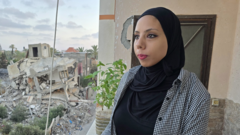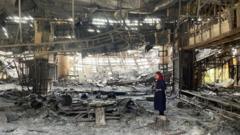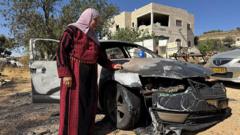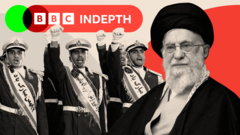As Russia claims to be rebuilding Mariupol, residents describe a starkly different reality, highlighting water shortages, economic hardships, and propaganda-infused education. Despite daily struggles, a secret resistance movement seeks to document and challenge the occupying forces.
The Real Story of Mariupol: Residents Challenge Russian Narratives
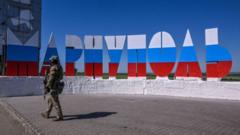
The Real Story of Mariupol: Residents Challenge Russian Narratives
Residents of Mariupol push back against Russian government claims, revealing ongoing hardships and a stark reality contrasting promoted images of recovery.
Ukrainian residents of Mariupol insist that the reality in their city sharply contrasts the rosy picture portrayed by Russian authorities. John, a Mariupol resident whose name has been changed to protect his identity, expressed his frustration: "What they're showing on Russian TV are fairy tales for fools. Most of Mariupol still lies in ruins." Following the city's capture over three years ago after a severe siege, many buildings remain dilapidated, with Russian media showcasing only the areas that have been superficially repaired.
While Russian influencers highlight a transformed city where life appears to have returned to normal, the real conditions tell a different story. Many residents still reside in partially destroyed homes, with John noting the ongoing existence of rubble just outside the view of the cameras. Olha Onyshko, who escaped last year, emphasized the inadequate reconstruction efforts, observing that the central square is among the few areas that received attention.
The city is struggling with significant issues such as water scarcity. Residents report that water supply is sporadic and discolored. James, another local, pointed out, "The colour of the water is so yellow that even after boiling it, it's scary to drink." According to Serhii Orlov, the city's deputy mayor in exile, the sole operational reservoir cannot meet the demand due to prolonged occupation.
Moreover, Mariupol faces frequent power outages, inflated food costs, and shortages of essential medicines. As James noted, individuals with chronic conditions struggle to obtain necessary treatment. These overwhelming challenges exacerbate the distress felt by residents, particularly regarding the education of children in schools where propaganda replaces factual learning.
Children in occupied schools are taught a revised history, portraying Russia as a liberator and claiming territories that are still recognized as part of Ukraine. Andrii Kozhushyna, who studied in Mariupol and later escaped, detailed how teachers unwilling to comply with this new curriculum face intimidation.
Despite the clampdown on dissent, a covert resistance operates within the city. Residents have been known to signal their defiance by painting Ukrainian colors and distributing pro-Ukrainian leaflets. James and John are members of such groups, documenting military activities and gathering intelligence for Ukrainian forces while facing severe risks of exposure. Andrii recounted how he narrowly escaped after being identified by Russian soldiers.
Living in Mariupol today is fraught with danger, as residents navigate constant surveillance and fear of arrest. Communication is precarious, with many deleting messages regularly to evade detection. John articulated a widespread sentiment: "We don’t want 'peace at any cost'. We want liberation." Amid ongoing negotiations between Russia and Ukraine, the resilience of Mariupol residents urges the world not to forget their plight and the sacrifices made for freedom.



